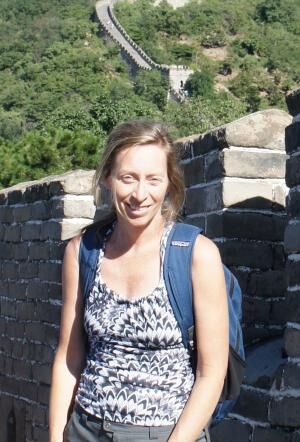Some information may be outdated.
How can a single ecosystem both expand and contract in the same region? Pinyon-juniper woodlands are doing just this: found across the Colorado Plateau, this diverse ecosystem is encroaching into new habitats while simultaneously experiencing huge die-offs. This week, Science Moab speaks with Dr. Nichole Barger, an ecologist at the University of Colorado-Boulder, to explore this counterintuitive combination.
Science Moab: Can you describe where pinyon-juniper forests occur on the landscape?
Barger: The pinyon-juniper woodland is an interesting vegetation type because it is spatially extensive. It’s the third-largest vegetation type in the lower United States, and it occurs in really broad types of soils, with a lot of different types of plants. A simple characterization is that it’s a semi-arid woodland that occurs across the Four Corners region up into the Great Basin region and across diverse soil and vegetation types. These woodlands also have a diverse structure and composition.
Science Moab: Could you talk about the current expansion of these woodlands into new areas?
Barger: We’re often seeing the expansion of pinyon-juniper into sagebrush. What this means is that in large sagebrush areas, the whole landscape will be dotted with pinyon and juniper trees. In some of my earlier work, about 17 years ago, I started asking: why? What’s driving all of this? Is it caused by changes in climate? Land use or grazing? Interactions with changes in fires?
The only way to start decoupling that is to identify an ungrazed area that has not been historically accessible to cattle, versus a historically grazed area. In comparing these ungrazed and grazed research sites, we found that there were really no differences. In the ungrazed site, what appeared to be driving the structure of the pinyons was past climate: it was really wet around the turn of the century, and about a quarter of the trees that were there and still living there were all recruited during that really wet time period.
I’ve also looked at a lot of historical aerial photos in the Canyonlands region of grazed and ungrazed mesa tops. Remote mesa tops like Lavender Mesa, which is not accessible to cows, contain open meadows and open areas of sagebrush and grasslands, and there has been no encroachment or expansion of pinyon-juniper. Then, other areas that have been grazed have had expansion. So it’s a pretty complicated story. If you go to treat these landscapes and remove the trees that are expanding, you really need to look at the vegetation type, and what’s driving that.
Science Moab: What about the reports of pinyons and junipers dying in large numbers around the Southwest?
Barger: Around 2003, we started seeing massive deaths of pinyon in particular, driven by a combination of drought and the ips beetle, which is a native pest. In a lot of these areas where you could get both expansion and infilling, we saw up to 90% mortality attributed to the ips beetle. The whole Four Corners region was seeing this.
In a previous climate, we would expect a lot of these woodlands to just reset themselves. Given this new climate of higher temperatures and precipitation changes, though, we don’t know whether we will still see much recovery. We need a lot of cool, wet years for these trees to recruit. If we’re not seeing those, the question is whether or not the trees will be able to establish again.
Science Moab: How have human actions impacted the spread of pinyon-juniper woodlands?
Barger: What’s interesting is that from a social and agricultural perspective, pinyon-juniper has always been viewed as a bad thing because these trees move into what we’d consider prime agricultural lands, such as sagebrush for wildlife and grasslands for livestock. I think there are huge social decisions that have been made from an agricultural perspective that have influenced pinyon-juniper ecosystems. The other thing that has occurred over the last 15 years is the removal and thinning of pinyon and juniper trees for fuel reduction and fire mitigation under the Healthy Forests Restoration Act of 2003. We humans have seriously altered these landscapes over the last half-century through our decisions to remove these trees and promote certain other species, such as shrubs and grasses, for livestock and wildlife.
To learn more and listen to the rest of Nichole Barger’s interview, visit soundcloud.com/user-495802209/the-complexities-of-pinyon-juniper-woodlands. This interview has been edited for clarity.
Appreciate the coverage? Help keep local news alive.
Chip in to support the Moab Sun News.





